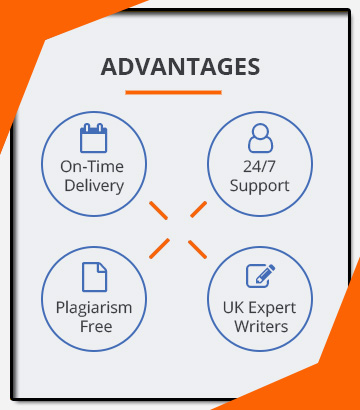|
|
Level 3
|
Level 4
|
Level 5
|
Level 6 (Graduate level)
|
|
90-100%
|
Very detailed answers to all parts of the question / task. Extremely clearly structured and focused, demonstrating overall coherence and in- depth understanding. Clear evidence of a range of independently sourced material well applied in all contexts.
No obvious errors in grammar as appropriate.
|
Focused and comprehensive engagement with the question, showing evidence of in-depth understanding of the issues. Extremely clearly structured and demonstrating a coherent argument throughout.
Evidence of wide, independent reading.
No obvious errors in referencing or grammar or syntax as appropriate.
|
Exceptionally detailed and original response to the assignment, with critical use of independently sourced contextual material.
Outstanding demonstration of linked understanding of relevant theory, concepts and models. Extremely well structured with high level of analysis.
No obvious errors in referencing or grammar or syntax as appropriate.
|
Exceptional level of analysis, showing deep critical engagement with a comprehensive range of contextual material. Demonstration of independent thought resulting in highly original or creative responses to the assignment. Provision of clear evidence of understanding of current scholarship and research based on an extensive range of relevant sources. Extreme clarity of structure demonstrating complete focus of argument.
No obvious errors in referencing or grammar or syntax as appropriate.
|
|
80-89%
|
Detailed answers to all parts of the question / task. Very clear, logical structure and focus, demonstrating overall coherence. Clear evidence of independently sourced material appropriately applied.
Very few errors in grammar as appropriate.
|
Detailed response to all relevant parts of the question with evidence of clear understanding of the issues. Well structured with evidence of independent reading supporting the argument.
Very few errors in referencing or grammar or syntax as appropriate.
|
Very full, independent response to the assignment with totally relevant material which is well beyond any module input, demonstrating independent study. Excellent understanding and application of relevant theory, concepts and models. Very clear logical structure.
Very few errors in referencing or grammar or syntax as appropriate.
|
Excellent links between relevant ideas, theories and practice. Evidence of clearly independent scholarship and the ability to engage critically and analytically with a wide range of contextually relevant resource material.
Demonstration of original insights, supported by extremely well structured overall argument.
Very few errors in referencing or grammar or syntax as appropriate.
|
|
70-79%
|
Full answers to all the parts of the question / task. Clear structure and focus. Evidence of material not covered in taught context and appropriately applied to given context.
Few errors in grammar as appropriate.
|
Identification and very good understanding of issues in the assessment. Full answers to all questions/task. Very clear argument with relevant examples used to illustrate response. Clear evidence of reading outside the module list.
Few errors in referencing or grammar or syntax as appropriate.
|
Full response to the assignment with all content relevant and focused. Very good understanding of relevant theory, concepts and models. Application of appropriate theory to examples/practice, demonstrating a rigorous approach to a variety of ideas, contexts and frameworks.
Few errors in referencing or grammar or syntax as appropriate.
|
Very good links between a range of different ideas and theories. Places issues in a wider context. Evidence of clear understanding of a range of relevant theories and application of these appropriately. Independent ideas, well argued and supported.
Few errors in referencing or grammar or syntax as appropriate.
|
|
60-69%
|
All significant content accurate. All main points of question / task covered. Identifiable structure. Some evidence of material not directly covered in taught input.
Some small repeated errors in grammar as appropriate
|
Good understanding of the issues. Engages directly with the question. Clear argument with good examples used to support it. All main points and important issues of the question/task covered. Some evidence of reading outside the module list
Some small repeated errors in referencing or grammar or syntax as appropriate
|
Answers most if not all detailed aspects of the question. Content mainly relevant and accurate. Good knowledge and understanding of relevant theory and concepts and application of theoretical models. Evidence of a developing appreciation of contextual issues.
Some small repeated errors in referencing or grammar or syntax as appropriate
|
Clear links between theory and practice. Good coverage of assignment issues. Full understanding of core issues.
Evidenced level of understanding of appropriate theory and concepts.
Some small repeated errors in referencing or grammar or syntax as appropriate
|
|
50-59%
|
Content generally accurate and relevant to the question / task. Reasonable breadth of taught material used. Evidence of structure.
|
Generally sound understanding of basic concepts. Content relevant to the question/task. Competently deals with main issues. Reading based on main texts or materials, but not always fully utilised in supporting arguments.
Some repeated errors in referencing or grammar or syntax as appropriate.
|
Main issues addressed and solid attempt to answer question. Some relevant content applied. Sound knowledge and understanding of relevant theory and concepts and identification of main issues
Some repeated errors in referencing or grammar or syntax as appropriate.
|
Identifies main issues and relevant theory. Coverage of most of assignment issues. Competent application of relevant theory and states obvious links to practice.
Some repeated errors in referencing or grammar or syntax as appropriate.
|
|
40-49%
40% Pass mark
|
Satisfactory evidence of understanding of basic concepts/issues and demonstration that the learning outcomes have been met. Limited use of the breadth of taught content. Some attempt at structure.
|
Satisfactory evidence of understanding of basic concepts/issues and demonstration that the learning outcomes have been met. Content broadly relevant but with limited or little application of theory. Almost totally descriptive.
|
Satisfactory attempt to address question/issues with some content relevant to assignment topic. Demonstration that the learning outcomes have been met. Material engages with relevant module materials, but largely repeats taught input and lacks development or personal interpretation. Some general understanding of topic
|
Demonstration that the learning outcomes have been met. Makes few links between theory and practice. Answers question in a very basic way.
Describes relevant theory accurately, and some relevant ideas offered.
Limited coherence of structure.
|

